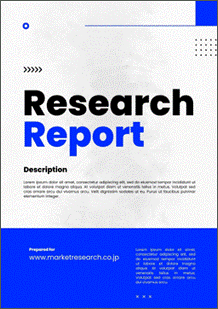 | • レポートコード:D0-MOR-AP0592 • 出版社/出版日:Mordor Intelligence / 2020年4月20日 • レポート形態:英文、PDF、120ページ • 納品方法:Eメール(受注後2-3営業日) • 産業分類:動物栄養及びウェルネス |
| Single User | ¥629,000 (USD4,250) | ▷ お問い合わせ |
| Team User | ¥703,000 (USD4,750) | ▷ お問い合わせ |
| Corporate License | ¥1,110,000 (USD7,500) | ▷ お問い合わせ |
• お支払方法:銀行振込(納品後、ご請求書送付)
レポート概要
| 本調査レポートは、ピーナッツミールの世界市場について調査・分析した資料で、ピーナッツミールの市場概要、動向、セグメント別市場規模、地域別分析、競争状況、企業情報、市場機会分析などで構成されています。 |
The market for peanut meal is estimated to witness a CAGR of 4.5% in the forecast period.
The growing demand for meat and aquaculture products is the major driving force behind the growth of the peanut meal feed market. Increased awareness regarding quality meat and milk products and increased livestock production are two other factors augmenting the growth of the market studied. Peanut meal being a by-product of peanut productipon, the widespread production and consumption of peanut, also acts as a driver for peanut meal production, which in turn facilitates the growth of the market.
Key Market Trends
Growing Demand for Meat and Aquaculture Products is Driving the Market
The worldwide economic downturn has had a very limited effect on the global meat market, which has maintained its positive outlook. The highest growth of meat consumption is expected from the Asia-Pacific and South American regions because of changing diet patterns, urbanization, population, and economic growth. For example, the Chinese demand for meat continues to surpass the domestic supply, according to report by Agriculture and Agri-food Canada. Fish are low in fats, cholesterol, and carbohydrates. Although not very high in protein, fish also provide essential vitamins and amino acids. The demand for seafood is increasing rapidly as more and more people are becoming aware of the health benefits of fish consumption. Globally increasing population trends are also supporting the growth of the world meat and seafood market. Increasing life expectancy and limited availability of land and water resources for animal feed production, and increasing use of these resources for food and ethanol production are increasing the demand for animal feed in the global meat industry. The growing demand for meat and seafood is inturn likely to boost the peanut meal market as it would ensure that there is a steady demand for animal feed that includes peanut meal, in the coming years.
North America Leads the Peanut Meal Market
North America accounts for the majority of share of the peanut meal market. The market in this region is characterized by the rising demand and consumption of nutmeals and high disposable incomes of the consumers allowing them to incorporate a good high-protein diet, with a high meat consumption. This increased demand for meat protein has triggered meat production in the region, especially in the countries of United States, Mexico,and Canada, where the uptake of peanut meal as feed has increased and is expected to show a healthy growth rate. Apart from improving nutritional value peanut meal feed is gaining importance for their role in meat quality improvement.
Competitive Landscape
The global peanut meal market is fragmented among small regional players and the top international companies occupy only a limited market share. The leading companies are focussed on acquiring feed mills and small manufacturing for expansion of the business in local as well as foreign markets. Some of the players have been expanding their geographical presence by acquiring or merging with the manufacturers in the foreign market. The leading companies are also focused on the expansion of the business across regions and setting up a new plant for increasing production capacity as well as a product line. The companies are also increasing production capacities of their existing plants. For instance, in 2019, Singapore-based Wilmar International built new plants as part of a project to construct integrated manufacturing complexes in China, in order to take advantage of the rising swine fever issues in the country and expanding its business.
Reasons to Purchase this report:
– The market estimate (ME) sheet in Excel format
– Report customization as per the client’s requirements
– 3 months of analyst support
1 INTRODUCTION
1.1 Study Deliverables
1.2 Study Assumptions
1.3 Scope of the Study
2 RESEARCH METHODOLOGY
3 EXECUTIVE SUMMARY
4 MARKET DYNAMICS
4.1 Market Overview
4.2 Market Drivers
4.3 Market Restraints
4.4 Porte’rs Five Forces Analysis
4.4.1 Threat of New Entrants
4.4.2 Bargaining Power of Buyers
4.4.3 Bargaining Power of Suppliers
4.4.4 Threat of Substitute Products
4.4.5 Competitive Rivalry
5 MARKET SEGMENTATION
5.1 Animal Type
5.1.1 Ruminants
5.1.2 Poultry
5.1.3 Swine
5.1.4 Aquaculture
5.2 Geography
5.2.1 North America
5.2.1.1 United States
5.2.1.2 Canada
5.2.1.3 Mexico
5.2.1.4 Rest of North America
5.2.2 Europe
5.2.2.1 Germany
5.2.2.2 United Kingdom
5.2.2.3 France
5.2.2.4 Russia
5.2.2.5 Spain
5.2.2.6 Rest of Europe
5.2.3 Asia-Pacific
5.2.3.1 India
5.2.3.2 China
5.2.3.3 Japan
5.2.3.4 Rest of Asia-Pacific
5.2.4 South America
5.2.4.1 Brazil
5.2.4.2 Argentina
5.2.4.3 Rest of South America
5.2.5 Africa
5.2.5.1 South Africa
5.2.5.2 Rest of Africa
6 COMPETITIVE LANDSCAPE
6.1 Most Adopted Strategies
6.2 Market Share Analysis
6.3 Company Profiles
6.3.1 Wilmar International Ltd
6.3.2 Xiwang Foodstuffs Co Ltd
6.3.3 Cargill, Incorporated
6.3.4 Jiusan Group Food Marketing Co., Ltd.
6.3.5 Bunge Limited
6.3.6 Chia Tai Group
6.3.7 COFCO Group
7 MARKET OPPORTUNITIES AND FUTURE TRENDS